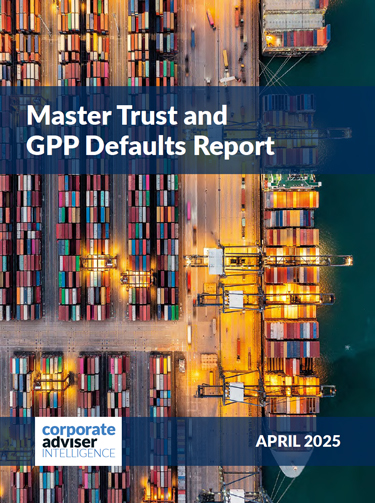The chances of being diagnosed with cancer continue to grow, with Macmillan Cancer Support data analysis indicating that UK sufferers will hit 3.4m this year – roughly half a million more than five years ago.
Mark Stephenson, CEO of Reframe says: “UK mortality rates from cancer are the worst in Europe, and 42 per cent of those diagnosed are already at stage 3 and 4. A big change is growth amongst the young, with cancer being diagnosed amongst 25-to-49-year-olds at twice the rate of any other age group.”
Fortunately, the disease no longer necessarily constitutes a death sentence, with WTW’s
2025 Global Medical Trends Survey showing that survival rates have more than doubled in the last 40 years, from 24 per cent to 50 per cent.
But the new diagnostic and treatment methods that have contributed to this excellent progress, when it comes to survival rates, are leaving insurers with plenty to think about. A claim involving an advanced therapy medicinal product (ATMP), for example, could cost half a million pounds.
In terms of core cover this is much more of a challenge for private medical insurance (PMI) providers than for group risk providers — where cover limits are capped, either at stated multiples of salary with income protection claims or a fixed lump sum payout on diagnosis on critical illness policies.
Private medical insurance
Charlie MacEwan, corporate communications director at WPA, hopes that the high costs of ATMP will prove to be more temporary.
“20 years back we were having the Herceptin debate but eventually things normalised and the NHS and insurers paid for it. The longer-term data for ATMPs isn’t there yet but, whilst all innovations start off being expensive, the ones that work get invested in and become better and better value.”
For the time being, however, there is a definite trend towards PMI providers offering different tiers of cover. This reflects a nervousness from some employers over potential funding implications, that is seeing many now look beyond the traditional cancer gold standard.
For example, Aviva’s Optimum group PMI product offers the choice of three levels of cover or the option to remove cancer cover altogether. The highest level provides extensive cover, including targeted therapy and biological therapy.
Shelley-Ann Bridges, health market leader at Mercer Marsh Benefits, says: “We are definitely seeing clients wanting to understand their options, and at the smaller end some are even wanting to take PMI away altogether. It’s the most interesting time I’ve seen in my 20 years in the industry, and clients are asking our opinion on some newer entrepreneurial companies.”
Intermediary feedback is that all major providers pass muster on core cancer cover, but some are clearly standing out.
Ian Sawyer, commercial director of Howden Life & Health, says: “Bupa’s cancer promise, with no financial limits on eligible treatment and access to the latest drugs where clinically appropriate, remains a clear differentiator.
“Axa Health has also built strong cancer pathways with dedicated nurse support, which really adds value. Vitality’s approach, linking access to certain treatments with member engagement in healthy living, is another interesting innovation.
“Some insurers include enhanced pathways, access to experimental drugs, or second medical opinions as part of their standard proposition, while others offer these only as add-ons. Axa Health, for instance, allows for planned overseas treatment, where appropriate, through extended cover options.”
He adds: “Differences also often lie in the level of personal support, where some providers are offering dedicated cancer case managers, nurse-led support, and more holistic care services, which can make a real difference to the customer journey.”
Group risk
Cancer has long been the top source of claims for all group risk covers, with the latest data from Group Risk Development (Grid) showing it accounted for 39 per cent of claims for life, 24.4 per cent for income protection and 68.1 per cent for critical illness in 2023.
So, insurers are increasingly offering specialist support services, some of which provide case managers to help navigate what is available on the NHS and provide additional services that can
help claimants manage and cope with the ‘ripple effect’ on family and work.
At Zurich, for example, all group income protection scheme members have access to an in-house service which allocates a dedicated cancer nurse to support them on their cancer journey and signpost available facilities.
All Zurich’s group risk schemes offer a second medical opinion service, and its group life scheme members and their families can access EAP-based bereavement support. Its critical illness proposition enables employers to include a cancer drug fund.
This is an additional payment, on top of the sum assured, and will payout if an employee needs treatment its particular NHS trust won’t fund. Zurich also gives employees access to the Reframe cancer support service at the point of diagnosis.
Reframe, which is also available via Unum’s group critical illness and life cover, offers in-depth assistance through the entire cancer pathway, from prevention to post-treatment, and access to an online cancer information hub.
Similarly, both Canada Life and Aviva offer group critical illness scheme members access to RedArc, which can allocate a nurse to provide practical advice and emotional support, even if cancer hasn’t actually been diagnosed.
Beth Husted, associate director, health and benefits at WTW says: “Most group risk providers have made the cancer claim journey a lot quicker and simpler. Whilst the insurance cover remains relatively consistent across providers, they can differ according to wellbeing support.”
Mark Stephenson feels that the group risk industry could still be offering more in the way of early diagnostics and education, estimating that £0.92 billion from its total £2.5 billion annual payouts go on cancer.
He says: “Providers should be offering more online risk questionnaires, which don’t cost much. And intermediaries should help educate employers to allow employees more time off to get scans and other diagnostics. Take-up rates of NHS cancer screening can vary between 30 per cent and 70 per cent across different geographical areas.”
Nevertheless, insurers are hardly standing still. Unum, for example, reports that it’s exploring new innovative solutions to add further personalisation to its digital healthcare services, with a key focus on prevention and early detection. These could involve utilising AI to allow customers access to preventative solutions from their own home.
If group risk and PMI providers are to effectively cope with increased cancer-related costs then screening and preventative support such as nutrition and lifestyle coaching are undoubtedly going to have crucial roles. As with so many other areas of healthcare, a stitch in time saves nine.
Box: Advocating whole-of-workforce approach
With the growing post-lockdown focus on whole-of-workforce solutions, employers struggling with cancer costs may wish to consider a non-insured service offered by Patient Advocate which can cut long-term absence in general by 70 per cent.
Costing as little as £100 per employee per year and involving no P11D liability, this can case manage and create care pathways utilising the NHS and other forms of support like cancer charities, helping income protection and PMI scheme members and non-members alike.
Mark Giles, director of Patient Advocate says: “PMI always looks at the closest but not the best hospital, but our relationships with consultants enable us to get people to centres of excellence. We look after the whole person and family, not just the condition.”
Patient Advocate still only partners with a handful of corporate advisers, pointing out that intermediaries have historically not been interested in the uninsured, but the potential of its approach seems enormous.
Steve Ellis, joint managing director of Prosperis — which does partner with it — says: “It seems unfair that some employees have access to group income protection and PMI but others don’t. This can benefit the entire workforce.”





